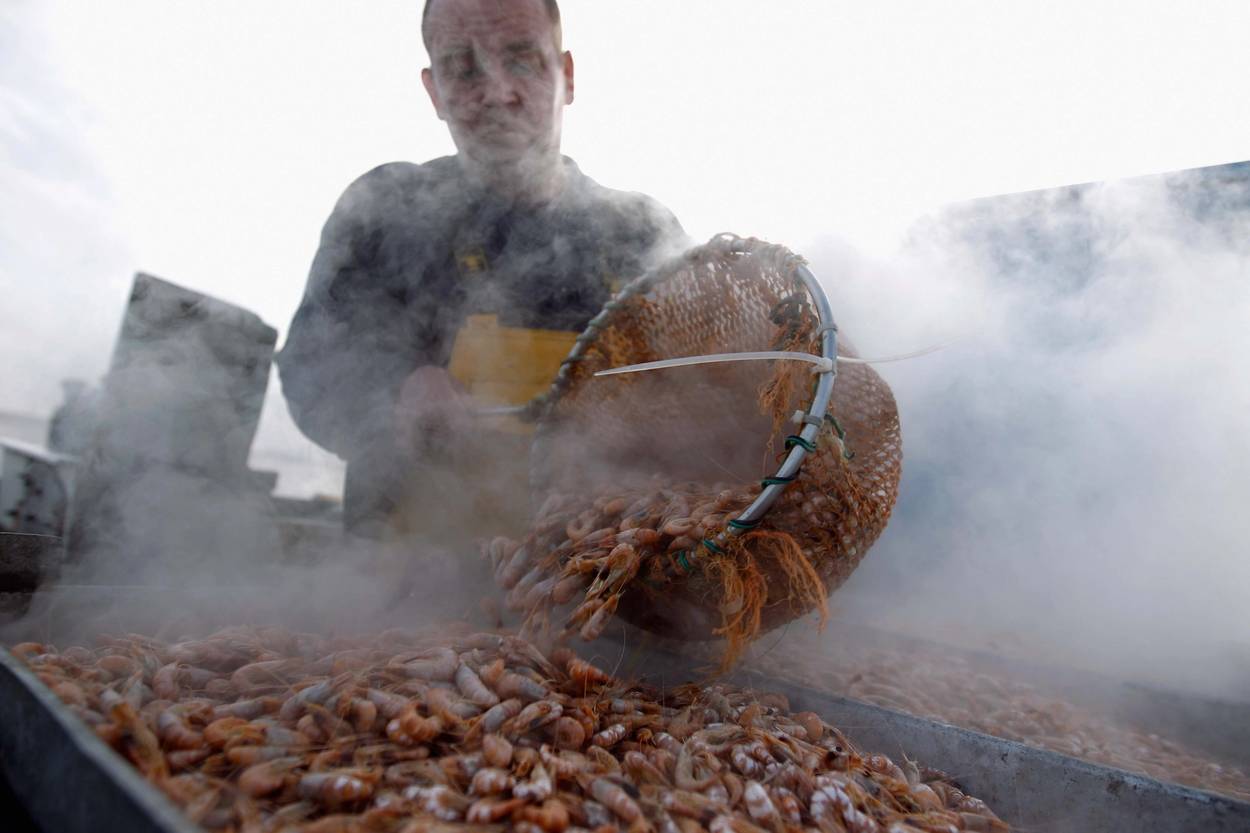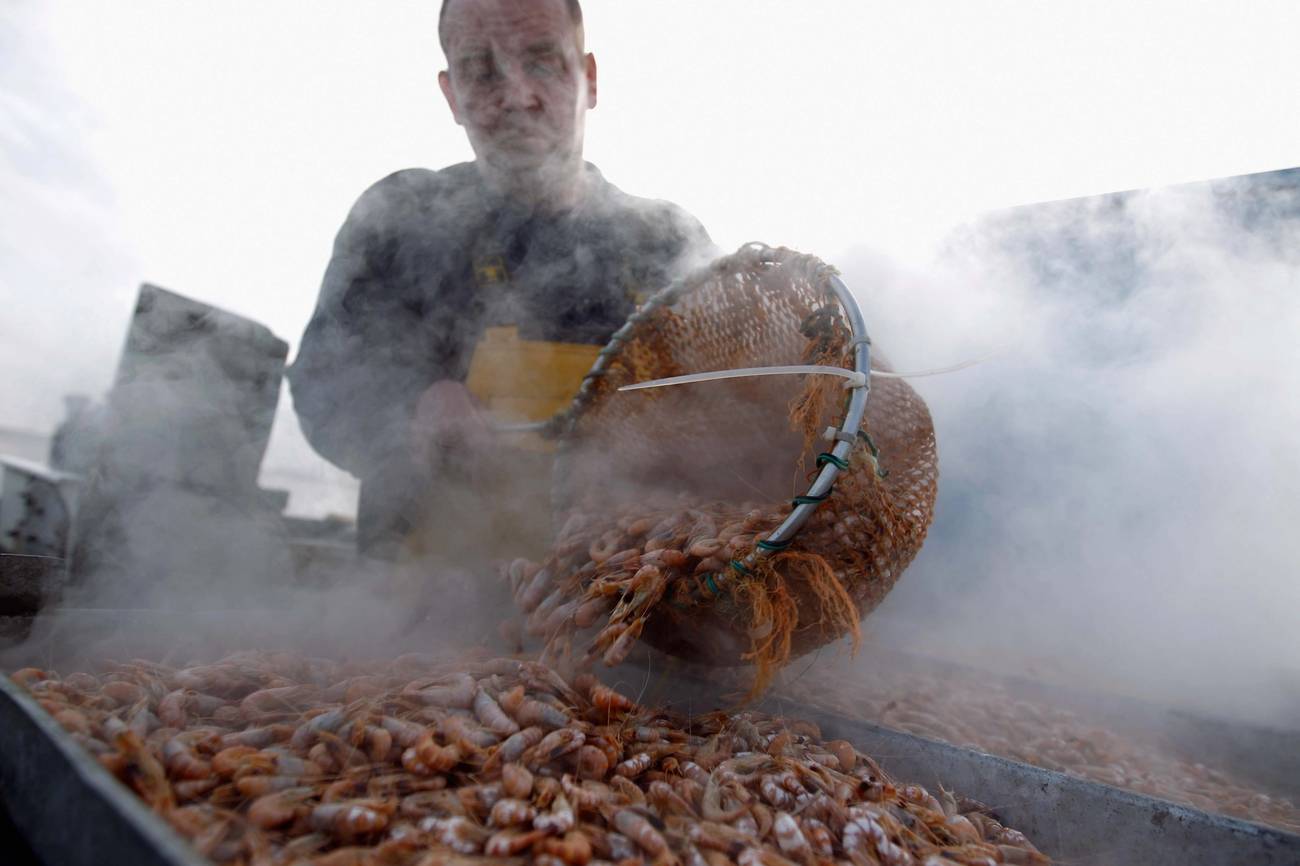Saying Goodbye to Seafood
When I converted to Judaism, I left behind part of my Norwegian heritage




When I underwent an Orthodox conversion to Judaism at age 23 in 1988, I didn’t think all that much about what I was leaving behind. I was high on love, and felt I had found my tribe. But I was giving up part of my heritage.
A transplant from Norway, the seafaring nation of epic explorers and fishermen, I grew up by the ocean as a fearless and curious child. Summers were spent on our boat, where we pulled our dinners up by nets or hooks, or with our own hands. By age 3, I knew how to clean a shrimp, sucking out the tiny, opaque eggs with the black dots from between its crowded legs. Crabs, mussels, lobsters, and eels were all part of my family’s Norwegian culinary traditions, which we relished.
Becoming Jewish, and committing to a kosher lifestyle, meant no more seafood.
The Torah tells us what to eat, and what not to eat. Leviticus 11:12 states: “Any [creature] that does not have fins and scales in the water is an abomination for you.” Since I had chosen Orthodox conversion, it seemed obvious to me that I had to observe at least the basic mitzvot to the best of my ability. After all, I had a conscience; I didn’t want to be hypocritical. I might have considered to convert Reform or Conservative or Reconstructionist, and perhaps felt less compelled to keep kosher, but my in-laws to be made sure I knew that if I or my future children—those three strapping Viking Jewish boys I was destined to bring forth—ever wanted to make aliyah, Orthodox conversion was the only safe bet to being granted Israeli citizenship. I could always decide later how observant I’d want to be, I heard them say.
I studied with their modern Orthodox rabbi for close to three years and took enough college courses in Judaic studies to secure a degree. By the time I sat facing the beit din of Hartford, Connecticut, I was buttoned and covered up, completely tzniut in my long skirt and closed-collar, long-sleeved blouse, and ready to accept the commitment to be a card-carrying, kosher Jewess.
I was strict in the early years of being Jewish, and the more mitzvot I observed, the more I felt it strengthened my new identity. I framed my married life with the three pillars of traditional observance: Shabbat, kashrut, and taharat hamishpacha, or the laws of family purity. Many Jewish-born friends were amazed at my resolve, and secular Israeli friends wondered out loud why I cared so much about the minutiae of observance, especially kashrut. My husband, Brian, went along reluctantly (he was raised “traditional” but not observant), and continued to order linguine in white clam sauce when we ate out. “As long as the kids don’t see it,” we’d agree; they went to an Orthodox day school and in their own sweet, innocent ways, had become the family’s kosher police. I, on my end, marveled at how my Jewish-born family and friends could eat bacon and shrimp and all sorts of chazerai and still call themselves Jewish, still genuinely feel Jewish.
Seafood was an important element of my childhood in Norway. In the summer, my dad and I would wade into the water, our bare feet balancing on slippery seaweed and rocks sharp with barnacles, pulling up clusters of mussels by the handfuls, and steaming them on deck. “We only eat the ones that open up by themselves,” my dad warned, “if they stay closed, it means they’re no good.” The pale and sometimes bright orange flesh of the mussel tasted salty and sprung spongy against my palate, and sometimes I’d bite into a tiny, white pearl that I’d carefully spit out and save in my treasure box. One of my parents’ friends, Bjarne, who was part of their partying flotilla of upwards of 15 boats sailing south along the coast, would set traps for crabs. I was maybe 10 or 11 and loved when I’d get to join him in his dingy to pull them up. He’d show me how to hold the pesky crustaceans so they couldn’t pinch me with their strong, dark claws, their beady black eyes darting around. Bjarne, with his full beard, pipe, and captain’s hat, taught me how to identify and remove the crab’s stomach that we should not eat, and how the bright red roe was hidden in the nooks and crannies of the shell. “You’ll find the tastiest meat in these tiny openings where the legs were attached,” he’d tell me. “The white meat in the big claws is for lazy people.” We never got sick from bad seafood.
Another family tradition took place every late fall when we’d pig out on freshly steamed lobsters at the family-owned ocean resort of my dad’s best friend, Anton. We’d pull down his graveled driveway as the first snow drifted around us, and the dark, choppy ocean on the far side of the sprawling lawn looked ominous and uninviting, so different from the warm summer months. Since the inn was closed for the season, we had the cavernous place to ourselves and my little sister and I roamed freely. Anton was connected with many fishermen on their island, and one of them, Kåre, was a generous, tall, and lanky man with a red nose and glossy eyes. He would come by with eels he had caught and smoked in the late summer, and we got to choose a few to bring back with us to Oslo. I’d stare into the depth of the bucket where the dark brown and oily looking creatures lay stiffly twirled around each other, and I’d point to the ones I thought looked the plumpest. They sure were ugly but I loved how they tasted salty and smoky and felt smooth in my mouth.
After I converted to Judaism as an adult, when I’d go back to Norway for my annual or biannual visits, I tried my best to keep kosher, but decided early on to not be too neurotic because I didn’t want to hurt my family’s feelings or make it more complicated than it had to be to share meals. I’d been moved by my parents’ efforts to accommodate me and to not mix meat and milk in the same meal, and remember with a smile when my dad mistakenly added butter to the potatoes he served with my favorite lamb dish (which had been salted and cured according to the Norwegian tradition, so I felt it was “close enough to kosher”). I looked the other way and complimented him on the delicious meal. We had so many exquisitely fresh (kosher) fish to choose from that not eating shellfish rarely felt like a loss, and together he and I would prepare whole, oven-baked trout and salmon, pan-fried mackerel, and salted or smoked cod. My mom often served fish pudding or fishcakes for my first dinner off the plane every time I’d come home for a visit.
One summer in those early years, I was invited to join friends on their boat for the customary midsummer night, June 23. The Oslo fjord teemed with ships of all types and sizes and the sun that would only set close to midnight made for a magical evening. White wine flowed from practical carboard boxes and mounds of freshly caught and boiled shrimp were passed around in huge bowls. A friend who was sensitive to my adopted dietary restrictions winked and said, “Well, at least it’s not pork, right?” I sighed and before passing on the bowl, grabbed a handful of the salty, pink delicacies. At least it’s not pork. I ate the shrimp, delighted in the lightly salted and firm flesh of each little curved form that I had peeled and neatly stacked on a slice of buttered, white bread, topped with mayo, black pepper, and juice from a fresh lemon wedge. But I felt guilty, too.
Over the years I’ve lived in the States, I have turned the kosher parts of my beloved seafood heritage into my staple cuisine, and friends applaud what they see as my culinary bravura involving all things fish. For my oldest son’s bar mitzvah, I cured gravlaks in our synagogue kitchen for 250 guests, and made five varieties of herring; in wine sauce, in tomato sauce, in curry sauce, in mustard-dill sauce, and finally herring salad with beets, apples, and pickles, all served with the requisite and chilled Norwegian Linie Aquavit. Our neighbors in Maine, food writers and chefs Michael and Amy, swooned when they had my pan-seared mackerel in our sukkah last year, and I rarely start Shabbat lunch without a few bites of pickled herring in wine sauce followed by a shot of vodka or gin. However, when I tried to make gefilte fish for the first time last Passover, it turned out dry and flavorless, and each time I venture to prepare Moroccan fish—typically with harissa and red peppers in tomato sauce—it just doesn’t measure up to the traditional Norwegian fish dishes my dad taught me how to make, generously prepared with butter, sour cream, and dill. It must have something to do with the heart and soul that goes into preparing the family recipes we cherish, and how valuable it is to be taught by somebody we know and love.
As the years passed and my identity as a Jewish woman, mother, wife and active community member solidified, my personal gung-ho commitment to kashrut became a bit more relaxed. But one of the unique things about living in a vibrant and observant Jewish community is that we often make choices that are not about our own preferences. So, our home remained strictly kosher so that (most) anyone would feel comfortable accepting an invitation to join us for a Shabbat or holiday meal. Occasionally, if I went out for sushi, I’d sneak an unavo maki, a roll with broiled eel and avocado and cucumber wrapped in seasoned rice and seaweed. The briny and smooth texture and taste of the small, warm chunks of eel shot electric through my emotional memory and felt so comforting it overran any inkling of guilt.
In 2011, after 23 years of marriage, Brian and I divorced. Eventually, in 2016, when the boys had flown the nest, I migrated north to Maine—lobster country—with my new partner, Tony, also a convert to Judaism. The irony is that he is more observant than I am, and although he verbally pines for oysters, he’d never eat them. I, on the other hand, occasionally order Maine scallops at the Dolphin Marina in Harpswell. With this, at age 54, I’ve added a new, American shellfish strain to my DNA, and the guilt is gone. Mostly.
The older I get the more I understand the value of my identity as multiple; I am Jewish and Norwegian to the core, but evolving. Today our home is vegetarian with the exception of fish on Shabbat—no more meat. I’ve noticed that Tony’s and my shared concern for the environment has influenced us toward a new path. I like to say I grew up modern Orthodox, since my emotional and intellectual formation as a Jew happened very much in that context. And now it is as if I am reaching my Jewish maturity: More confident, I have nothing to prove but to myself. I know where I belong.
Nina Lichtenstein is a writer, teacher, and storyteller who divides her time between Maine and Tel Aviv.